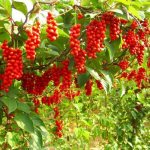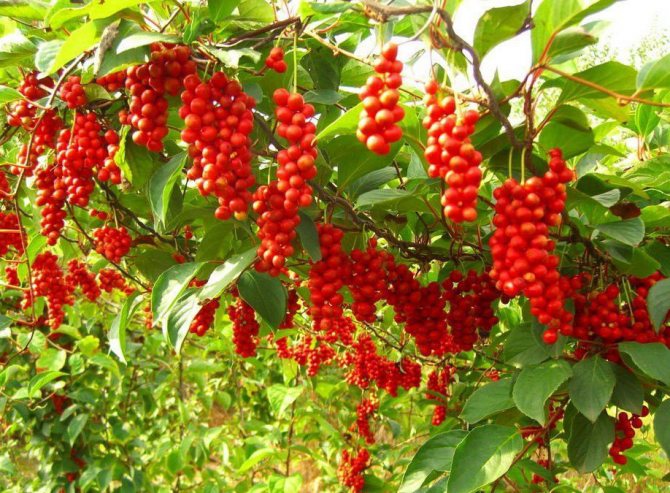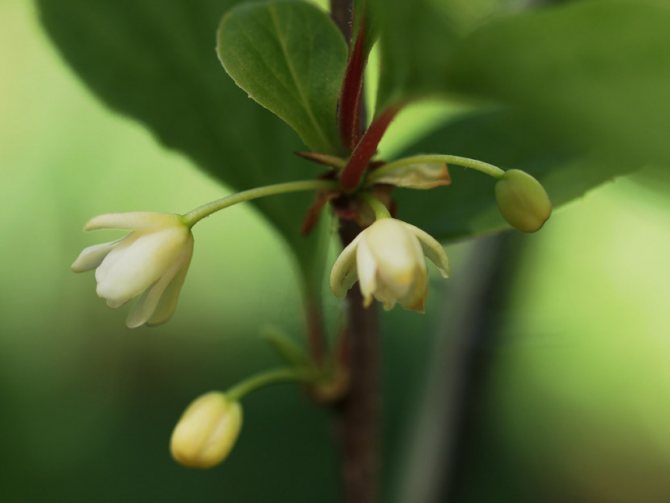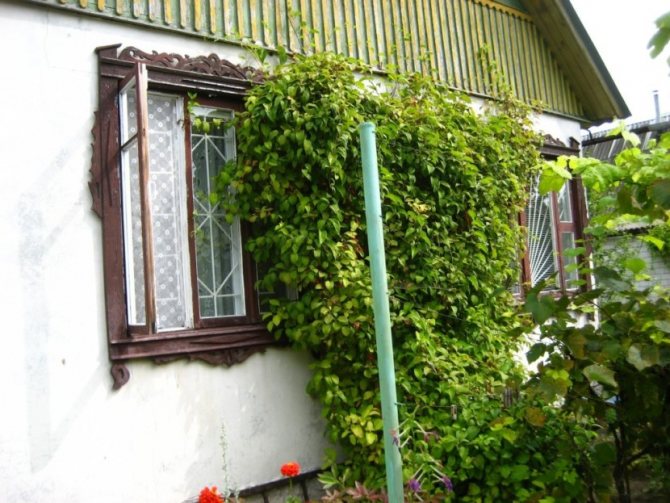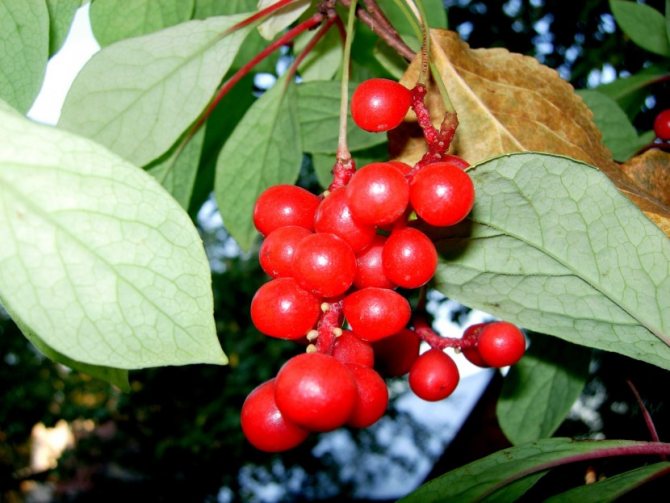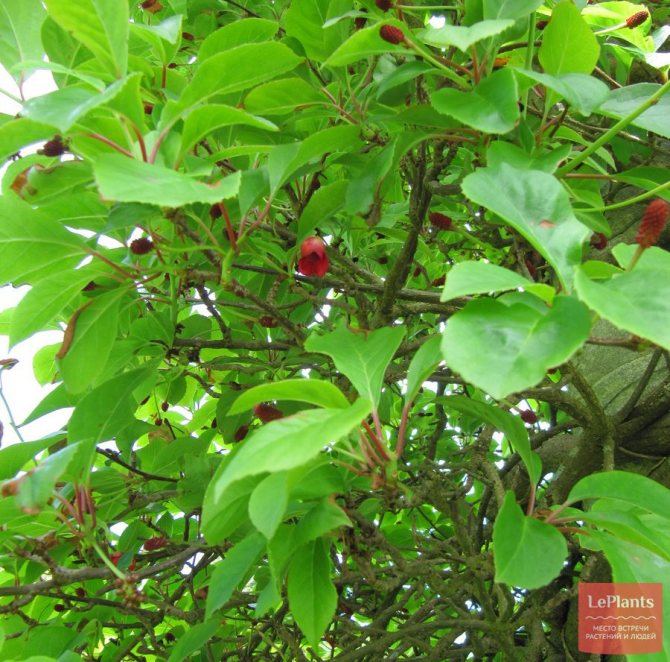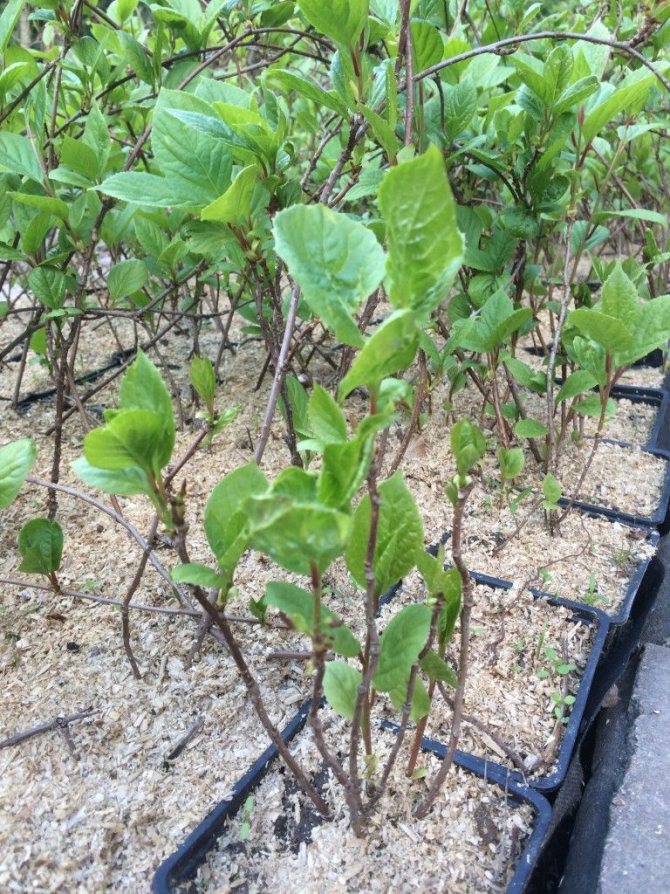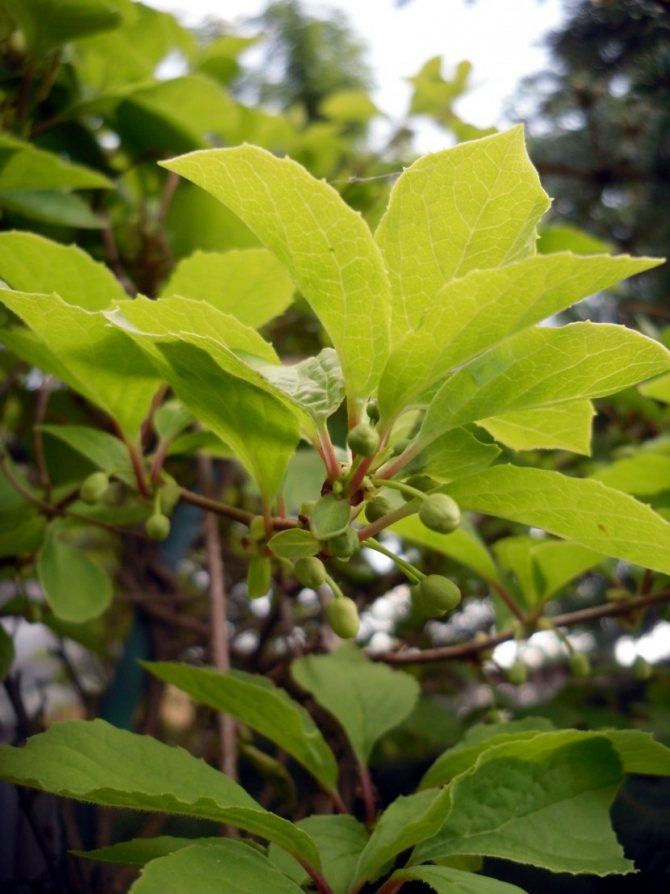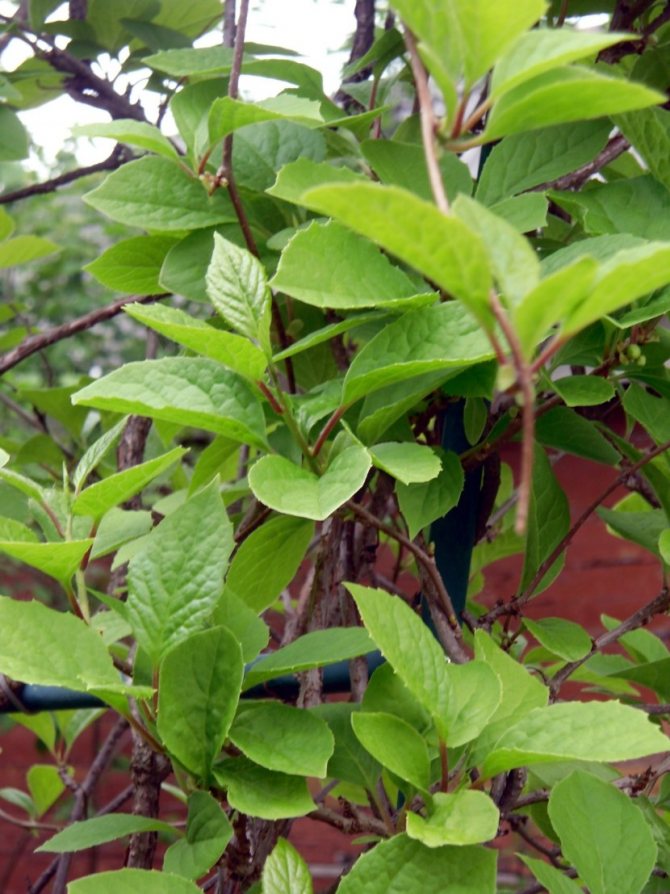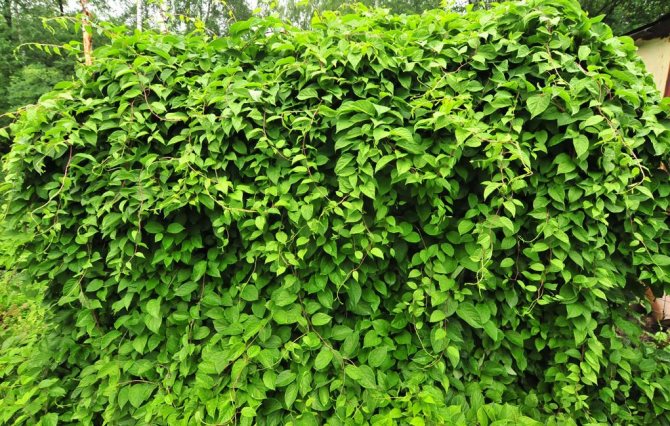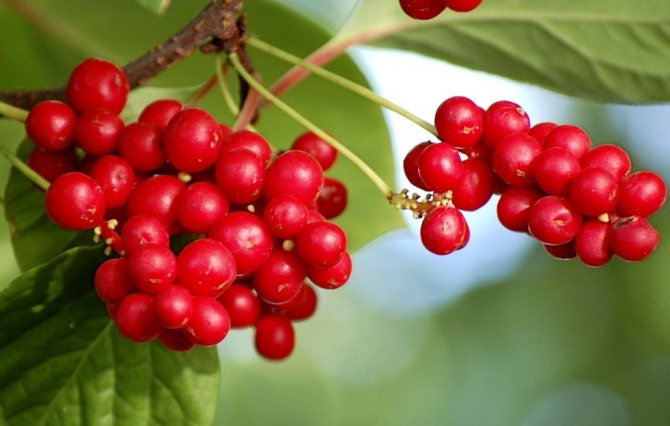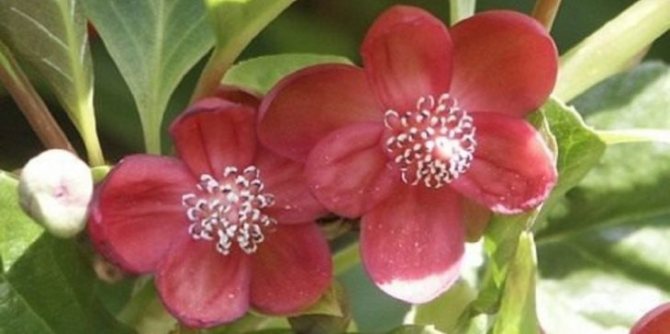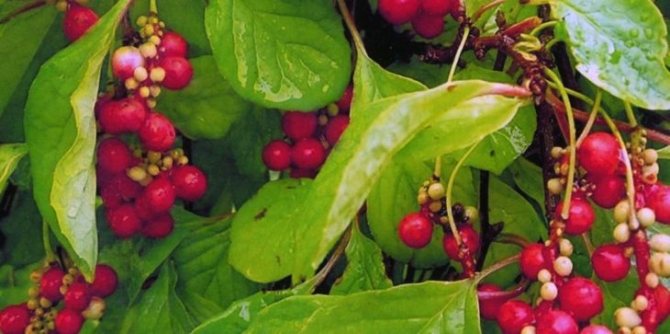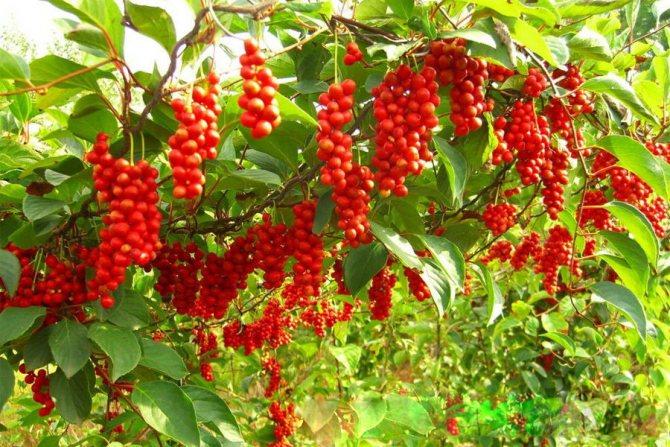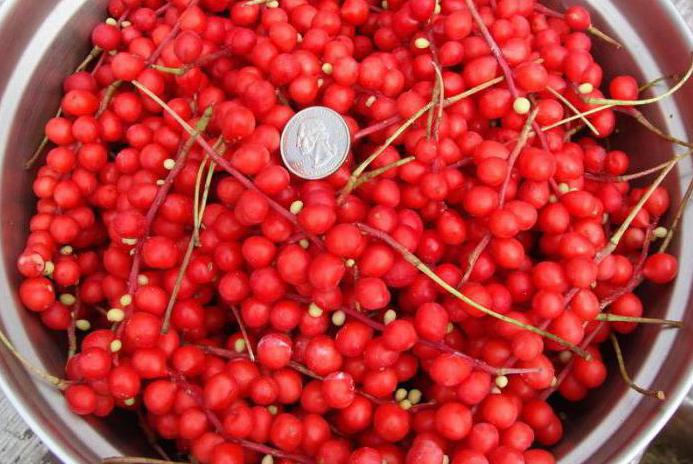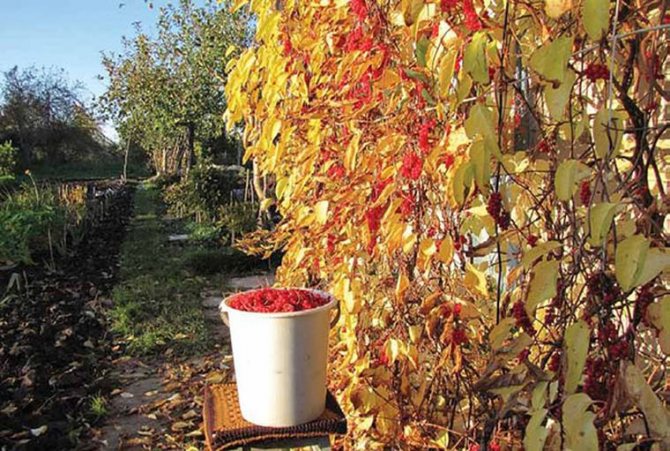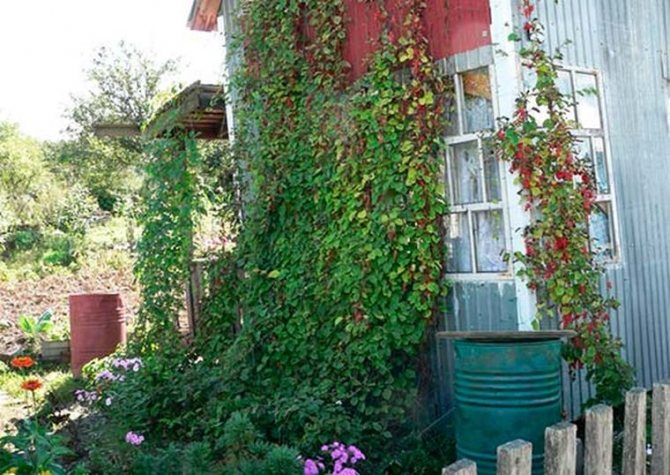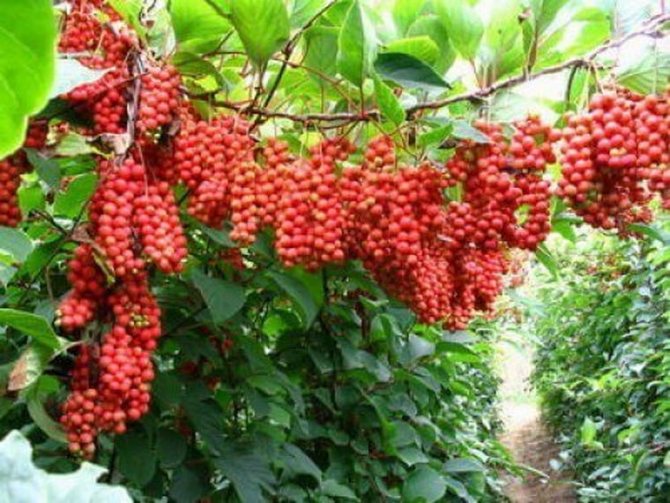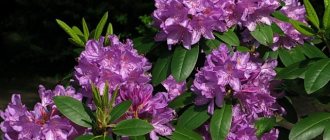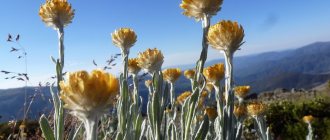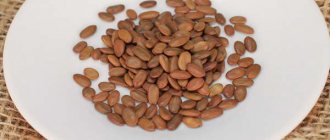Lemongrass (Schisandra) belongs to the Schisandraceae family, which includes both evergreen and deciduous plants in this genus. In this genus, scientists have from 14 to 23 species, while only one unique in nature grows on the territory of the North American continent. Lemongrass are mostly found in temperate climates and warmer lands. Among the genus, the most popular is Chinese lemongrass (Schisandra chinensis), the fruits of which have medicinal value.
| Family name | Lemongrass |
| Growing period | Perennial |
| Growth form | Shrub |
| Breeding method | Vegetative (dividing the bush, cuttings and rooting of cuttings) and seed |
| Landing period | In the spring, in the southern regions in the middle of autumn |
| Landing rules | The depth of the fossa is about 0.4 m with a diameter of 0.5-0.7 m |
| Priming | Any garden, well-drained and nutritious |
| Soil acidity values, pH | 6.5-7 - neutral |
| Lighting degree | Open and sunny location with shade on a hot afternoon |
| Humidity parameters | Regularly, for each bush up to 6 buckets |
| Special care rules | Supports for shoots are required, at least three plants are planted side by side at a distance of 1 meter |
| Height values | 0.7-15 m |
| Inflorescences or type of flowers | Racemose inflorescences |
| Flower color | Whitish cream or white-pink |
| Flowering period | Depends on the region of cultivation, but can be observed from the end of May to August |
| Fruit shape and color | Rounded bright red berries, collected in a cylindrical cluster |
| Fruit ripening time | From the second half of September |
| Decorative time | Spring-Autumn |
| Application in landscape design | As a fruitful crop or decoration of pergolas or arches, hedges can be formed, |
| USDA zone | 3 and higher |
The genus name was derived from the term "Schizandra", formed by the fusion of the Greek words "schizo" and "andros", which mean "to divide" and "man", respectively. This is because these representatives of the flora are owners of dioecious flowers. The specific name of the most popular species "chinensis" determines the main place of growth of these bushes - China or China. In Russian, lemongrass got its name because of a very strong aroma, similar to lemon, which leaves and shoots smell like. In Chinese lands, you can hear the name "uweizi", which translates as "berry of five tastes", all because the skin of the fruit is sweetish, the pulp is extremely sour, and the seeds have a burning and tart taste. If you prepare a medicine based on the fruits of lemongrass, then it will turn out to be salty.
Lemongrass are deciduous vines or those that retain their foliage year-round. The length of the shoots of such plants can vary in the range of 2-15 meters. The tops of the branches have the ability to wrap around the support in a spiral, following counterclockwise. Supports are needed for shoots due to the fact that the thickness of the branches rarely exceeds 2 cm. If there is no such support, then the plant will begin to climb branches along the trunks near growing trees. The shoots are covered with a bark of a light brown color.
In lemongrass, the shoots are divided into three types:
- up to one and a half meters long - vegetative;
- with a length of half a meter - vegetative-generative, at the base of which flowers are formed, and subsequently berries;
- with a length of 1 cm to 5 cm - generative, providing fruiting.
On the branches, the leaves grow in a regular sequence or can be collected in bunches (whorls) of several pieces. The outlines of the leaf plates are oval, they have a slight fleshiness. The color of the foliage is a rich dark emerald color.
Important!
For medical purposes, it is customary to use both the fruit of lemongrass and its vine.
In the sinuses, where the covering scales of mixed buds are located, the formation of flower rudiments occurs. When the “berry of five tastes” blooms, dioecious flowers are formed, that is, plants with only female or male buds. The perianth is corolla-shaped, it consists of 6-9 leaves. Stamen flowers (male) are characterized by the presence of five stamens, forming a thickened column by fusion, while only yellow anthers are free. The size of these flowers is smaller than the female (pistillate). The latter have no stamens; there is a receptacle with densely placed pistils. Their color is greenish.
The shade of the petals in the flowers is white-cream or white-pinkish, with full disclosure the diameter is 1.3–1.8 cm. The flowers are collected in racemose inflorescences. When lemongrass begins to bloom, a light pleasant aroma hovers around. Pollination is carried out by insects, among which not only bees, wasps and other Hymenoptera, small bugs can also do this. The flowering process occurs during the last week of May. Male flowers open a couple of days earlier than female flowers, while the duration of the process is 7-14 days.
Usually, fruits are formed on the growth of branches of the current year. The fruit is a composite leaflet, characterized by juiciness and taking outlines close to a cylindrical brush. Its length ranges from 2 cm to 16 cm. Such a brush carries from 1–2 pairs to 15–25 pieces of berries. The average weight of such a lemongrass fruit is 7-15 g. Each berry has 1-2 seeds in itself. Their size is average, since only 1 g contains 40-60 seeds. The germination of such seed material is uneven. The color of the berries is a rich bright red.
Ripening of fruits occurs from the second decade of September. At the same time, lemongrass can be decorated with its fruits before the vine begins to shed its foliage (until the 20th of October). When the fruiting period is in full swing, about 2.5 kg of berries can be removed from one 15–20-year-old liana. When growing lemongrass, for example, in the St. Petersburg region or in more northern regions, the harvests are famous for their greater abundance and they can be harvested once every 2-3 years. This property directly depends on the weather conditions of cultivation, since flowering lasts from July to August.
Brief description of berry culture
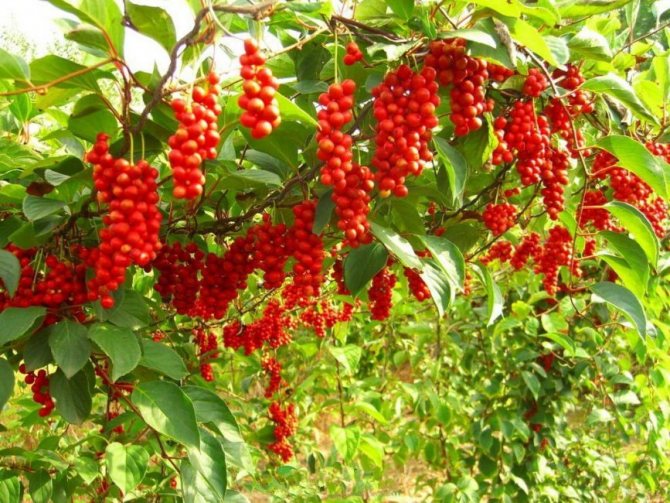
23 plant species studied
A curly tree-like liana with round red fruits of a bitter - sour lemon taste is a simple description of a plant that came to us from China and the Far East. The Chinese call it "the berry of five tastes" for its rich taste sensations. Subtropical, relict liana belongs to the class of "flowers" and the family "Schizondria".
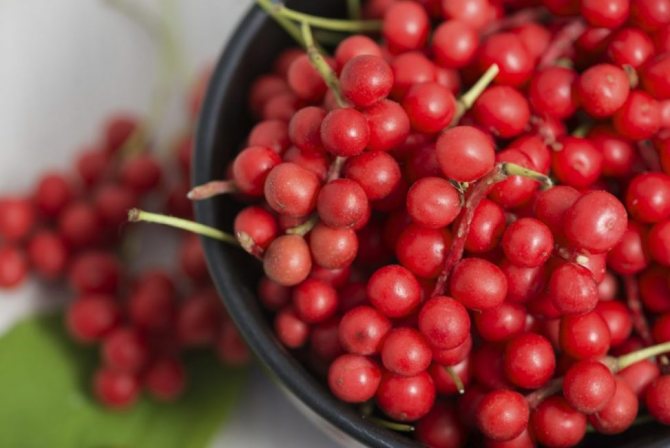

Schisandra chinensis berries
Description of the plant
Chinese lemongrass - perennial climbing plant... Its globular fruit has a characteristic lemon flavor. In nature, this plant can most often be found in the Amur Region, Khabarovsk and Primorsky Territories, therefore it is often called Far Eastern lemongrass. Growing and caring for liana is now available to gardeners in Russia, the Baltic States, Belarus, Ukraine.
Liana belongs to the schizandra family. In total, more than 20 species of this plant are known. Only one species grows in Russia - Schisandra Chinensis. Its characteristics include the following parameters:
- The trunk of lemongrass can grow up to 17 m in height, while having a thickness of about 3 cm.
- In the process of growth, the liana twines around the shrubs and tree trunks growing in the neighborhood.
- Its inflorescences resemble magnolia in appearance.
- The young stem is yellowish in color; with age, it changes to dark brown.
- The leaves are pointed, elliptical, 5-10 cm long.
- On one branch, there are both male and female flowers growing on a long peduncle, with a pleasant aroma.
- Flowering begins in late spring and does not last long.
- At the end of flowering, clusters resembling grapes of 20-25 berries are formed on the plant.
- Fruiting occurs in August-September. Up to 3 kg of berries can be harvested from one vine.
In addition to its decorative qualities, lemongrass is famous for its healing properties and is actively used in folk medicine. The Chinese call lemongrass "the berry of five tastes" because the skin of the fruit is sweet, the pulp is sour, and the seeds give off bitterness and have a tart taste, and when stored for a long time, the taste of the seeds becomes salty or insipid.
In the East, this plant is compared in value to ginseng. Schisandra has strong stimulating properties and is used to treat many diseases.


Reproduction


Let us examine in more detail the methods of reproduction of Schisandra chinensis at home.
back to menu ↑
See also: Plastic bottles, what can be made of them? Useful DIY crafts: for home and summer cottages (60+ Photo Ideas & Videos) + Reviews
Seeds
Before starting work, be sure to pay attention to the expiration date of the seed and its condition. Overdried seeds do not guarantee even 70% germination... The same goes for old seeds. No mechanical damage or cracks on the seed. A healthy plant cannot grow from such seed material.
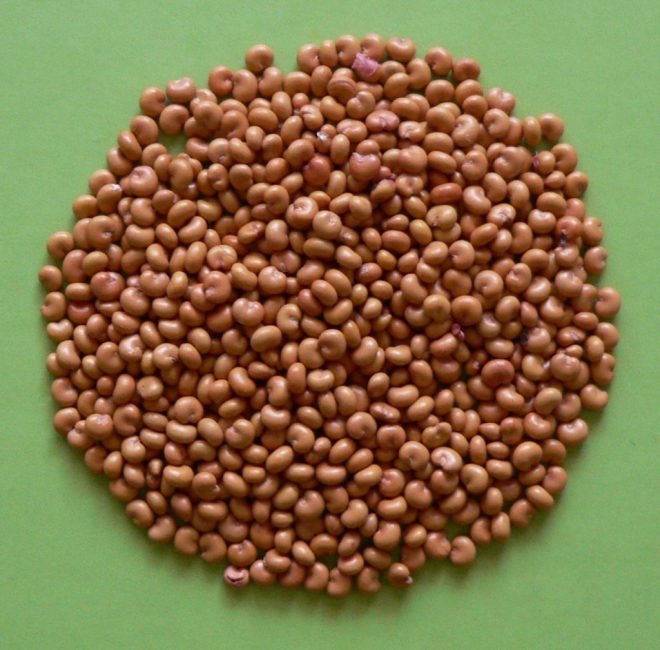

Chinese lemongrass seeds
Liana care
If you decide to start growing Chinese lemongrass, planting and care in the Moscow region and other regions will not differ much from each other. Unless you have to take into account the temperature difference and adjust the irrigation regime in this regard. Lemongrass loves water and requires 6-7 buckets of water at a time. The next day, the soil near the plant must be loosened and weeded out. Since the vine has a large green mass, it must be sprayed, especially on hot days.
Mulching with sawdust or peat will help preserve moisture at the roots.... They begin to feed lemongrass after 3 years of life, when it grows significantly. In the spring and summer, a solution of mullein or bird droppings is introduced once every 2-3 weeks. Additional nutrition for the liana is provided by mulching with leaf compost and humus. It is advisable to feed flowering lemongrass with nitrophos. In autumn, when the leaves fall, the plant is fed with wood ash, superphosphate and potassium sulfate, after which it is watered abundantly.
With a periodicity of 2-3 years, compost is embedded under each liana, digging it with the ground to a shallow depth. Lemongrass definitely needs support, for which most often they use a trellis 2-2.5 m high. With this arrangement of shoots, the sun's rays completely illuminate the entire plant, which contributes to its better growth and fruiting. It is most convenient to fix the shoots on a trellis in the form of a fan.
The first pruning of vines is done at the age of three, when the active growth of shoots begins. Pruning branches has a positive effect on fruiting. From 3 to 6 main shoots are left on the plant, which will form the skeleton of the bush. All other branches are cut at the very base. Subsequently, creepers are pruned every fall. Additionally, you can shorten the shoots in the summer if there are too many of them. Branches that have been bearing fruit for three years are also removed from the plant.Root shoots must also be cut out annually.
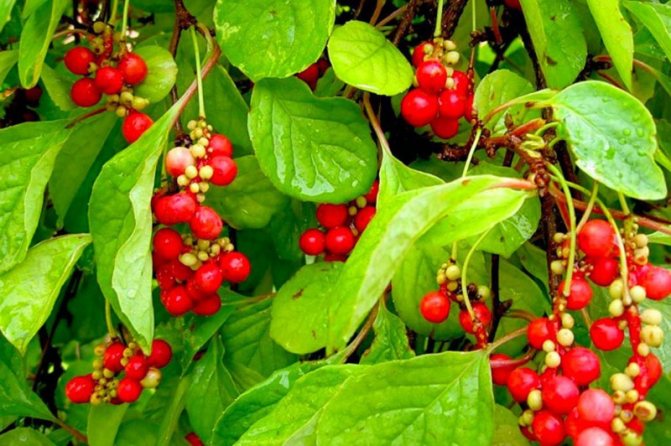

Landing
Before boarding, it is important to decide on a location. Lemongrass does not like transplants, such a vine will hurt and lag behind in development. Therefore, the site is chosen for a long time and taking into account possible redevelopment of the site. It is recommended to plant plants in beds where all types of vegetables and row crops grew.
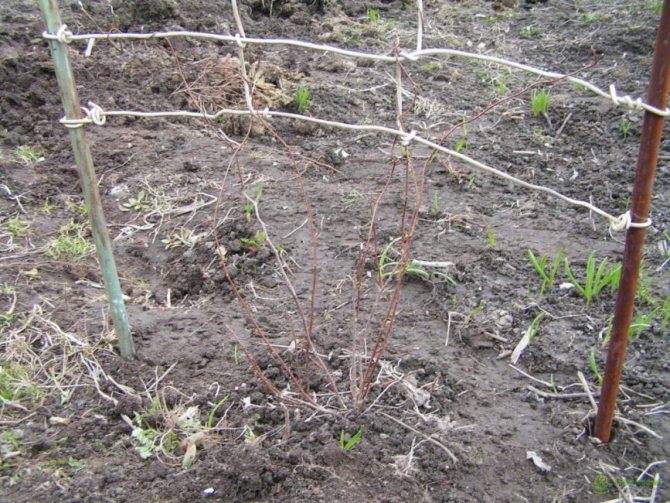

Young plant planted to form a hedge
The work is carried out in several stages:
1 In the selected places, at a distance of at least 1 m, planting holes are dug, 500/500 mm in size and 500-600 mm deep. The depth of the pit depends on the moisture level of the site and the increased drainage layer.
2 The excavated soil is mixed in equal proportions with humus, manure and river sand. Nitrogen is added to the soil - 40 g, any phosphorus fertilizer up to 150 g per 1 m2. The earth mixes well. The soil should not be lumpy and dry, such pieces can damage the root system. Therefore, the earth is pre-wetted with water and loosened.
3 If a short row of vines is planted, as a decorative hedge, holes are drilled in the extreme holes and 2 pipes are hammered. Length, depending on the variety of lemongrass - up to 3 m above ground level. For a long row of plants, it will be necessary to hammer in intermediate pillars to make a frame for attaching tall creeping plants.
4 Several rows of strong wire are stretched and fixed on the posts. It is better to do this work immediately, so as not to damage the young plants later. They will braid the hedge themselves; it will only be necessary to slightly adjust the direction of growth of individual vines.
5 At the bottom of the pit, a drainage layer of expanded clay, sand or broken brick is poured. The minimum thickness of such a layer is 100-150 mm.
6 In the middle of the hole, a mound of prepared soil is poured. Of all the seedlings, the strongest are selected. Each plant is pruned with a sharp secateurs, leaving only three buds. The cut edge is covered with garden varnish or clay solution. The root system is dipped in a slurry of clay mixed with cow dung.
7 The finished seedling is set on a mound in the hole, each root is carefully straightened and covered with small handfuls of earth so as not to damage the roots.
8 The soil is not filled up in height by 50-60 mm, it is compacted around the seedling. Up to 30-40 liters of warm water is poured into each hole. The remaining distance in the hole is filled with a layer of peat, sawdust or chopped bark of deciduous trees.
It is not recommended to plant single vines on the site. The best option is that there are at least 3-4 adult plants nearby. This planting provides good conditions for growth, increases the yield of the bushes and creates an attractive appearance of the site.
The plant is able to pollinate itself on its own, since it is monoecious with the presence of male and female flowers on it. But group planting provides a more efficient pollination process.
back to menu ↑
See also: Ranunculus (Buttercup): description, types and varieties, cultivation and reproduction, planting in open ground and care, useful properties (50 Photos & Videos) + Reviews
Schisandra chinensis. Cultivation and care, planting and reproduction of shisandra
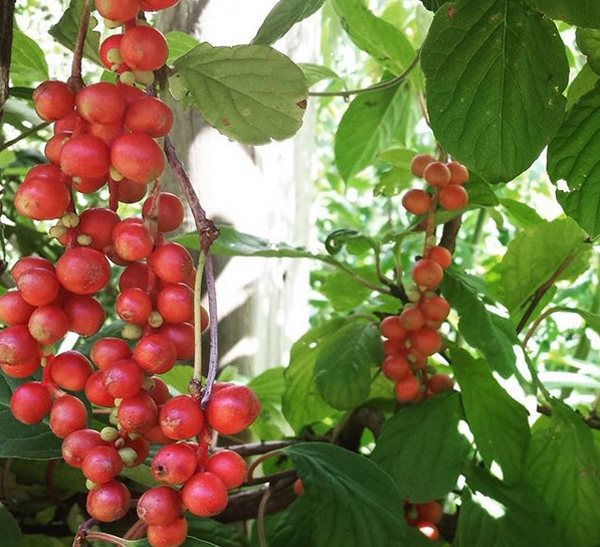

Chinese Schisandra (Schisandra chinensis)
It's hard to find a person who hasn't heard anything about lemons. These yellow southern fruits have a specific very pleasant aroma and are famous for the richest composition of nutrients. In nature, there is a plant with a similar name, which outwardly has nothing to do with lemons, but no less valuable and useful. This is Chinese lemongrass. Growing and caring for it has been practiced since time immemorial. Moreover, the plant is classified as relict, because it is one of the few representatives of the kingdom of flora that survived the ice age and has come down to us unchanged.People 250-300 years before the birth of Christ knew about
useful properties of lemongrass
... This is confirmed by records in the healing books of ancient healers, such as Ban Que, Hippocrates, Van Shuhe. Knew about lemongrass and Avicenna. The advice of these great minds of humanity is still relevant today. The plant got its name because its stems, leaves and fruits have a characteristic lemon aroma. Other names for Chinese Schisandra are Schisandra Manchurian (according to the place of growth), Chinese schisandra (from the Latin Schisandra), Chinese climbing magnolia (the first name for a vine in Europe).
Description
Chinese schisandra, the cultivation and care of which has recently become more and more popular, is a tall climbing liana that sheds its leaves for the winter. The plant belongs to the Limonnikov family, among which there are not only deciduous, but also evergreen representatives. They all have a common characteristic - the pleasant scent of lemon, exuded by leaves or flowers and fruits. But Chinese lemongrass is famous not only for this. Growing and caring for it has become popular due to its beneficial properties, as well as its high decorative effect. It is distinguished by Chinese lemongrass and enviable longevity. The tenacious and strong liana can be from 4 to 15 meters high, depending on the region. In the south, lemongrass always grows longer and more lush than in the north. The thickness of the stem closer to the base is 20 mm, but it can be up to 30 mm. A characteristic feature of the plant is that it always gives abundant growth. Varietal plants may not have overgrowth. This should be taken into account by those who are going to plant Chinese lemongrass in their garden. Growing and caring for it will certainly include getting rid of unnecessary shoots. Otherwise, they form dense, unattractive-looking thickets. Young seedlings have a smooth yellowish bark. Old vines have stems with dark, scaly bark. Leaves of Schisandra chinensis obovate (oval) with a sharp tip. The leaf blade is somewhat fleshy, bright green on the upper side, paler, with a slight edge along the veins on the lower side. On its edge, denticles stand out slightly. Petioles are reddish, up to 30 mm in length.
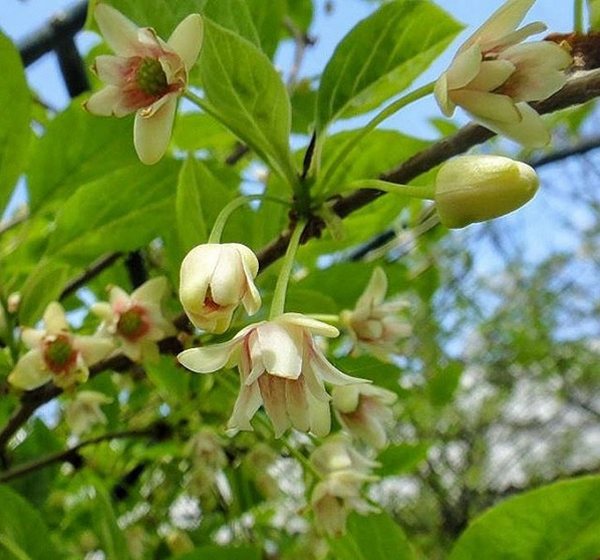

Female chisandra flowers
This is not to say that Chinese lemongrass is remarkable for its very beautiful flowers. Growing and caring for it is practiced mainly for the sake of berries or green mass. Nevertheless, when there are many of its small, up to 15 mm in diameter, unpretentious flowers, the plant looks quite impressive. There are varieties in which flowers can reach 20 mm in diameter. Flowers are male and female. They are located on thin pedicels up to 4 cm long (like a cherry). Inflorescences do not form, grow in 1-3, sometimes 5 from one leaf axil. The flower itself is unremarkable. It has 5 (sometimes 6 or 7, and in some varieties up to 10) medium-sized, slightly pointed petals of white or pinkish color. In the center of the female flowers are small carpels with a pointed nose. In the center of the male ones there are medium-sized stamens. The scent of these subtle flowers is impressive. Although Schisandra chinensis is often cultivated for medicinal purposes, during the flowering period (May-June) it amazes gardeners with its delicate lemon scent. At this time, bees are very fond of visiting it, swarming over the lianas drowning in fragrant white foam. These insects are the main pollinators of lemongrass. Its dioecious flowers can be on the same or on different plants, women like the tier closer to the top, and men prefer it closer to the ground. But sometimes only male flowers bloom. Then they say that the year for lemongrass is lean. Vine fruits are much more spectacular than flowers. They emerge from pollinated carpels and are red, very bright and juicy polyberries that grow in clusters. The berries are densely arranged in a cluster, which is usually up to 10 cm long.Their smell is very rich, one might say, specific. The taste of lemongrass berries is different. It can be sweet, bitter, pungent, spicy, sour. For this feature, it is called "the berry of five tastes." Inside the berries are rounded flat seeds with a concave segment. The diameter of the berry is about 5 mm, and the thickness is up to 2 mm.
► Girlish Grapes
►ClematisGrowing area
The homeland of the vine is China, Korea and Japan. In our country, the natural habitat is Sakhalin, Primorsky Krai, the middle reaches of the Amur, where it is found in forests, along rivers and streams on permeable soils. Although lemongrass comes from the Far Eastern regions, growing and caring for it is interesting for gardeners in many regions of Russia (including the Moscow region, St. Petersburg). It is believed that liana can grow successfully, starting from the 4th zone of frost resistance, and below. It hibernates at temperatures up to -35 degrees, while unripe young shoots can freeze. In colder climates, the vine turns into a bush and does not bear fruit.
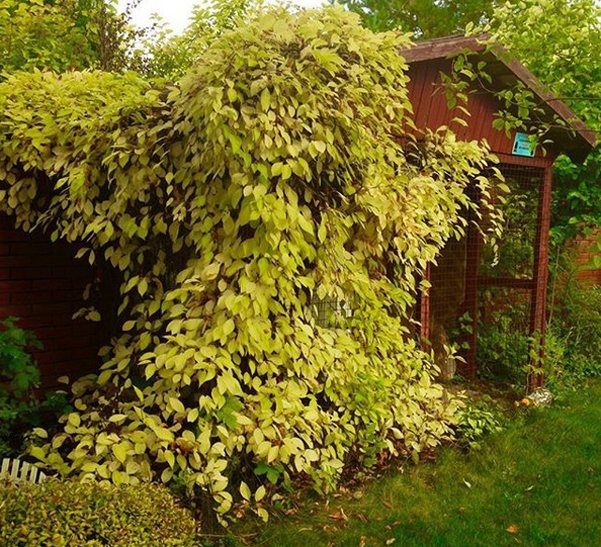

Lemongrass in the garden
Use in the garden
Lemongrass is decorative at any time, therefore it is in demand among gardeners. He can disguise unsightly buildings, create a shadow in the gazebo or decorate an arch or pergola, serve as a hedge. You can admire its thick leaves, which simultaneously turn yellow in the fall and color the liana in a golden color. Bunches of purple berries, ripening by this time, enhance the brightness of the foliage, and when it falls off, they hang for a long time on winding shoots, decorating an empty garden in winter. Lemongrass bloom is another delight that can be experienced not only near the vine, but also at a distance from it. The lemon scent of the flowers spreads for several meters. And if suddenly later you want to remember this smell again, it is enough to rub a torn leaf or a green branch of lemongrass in your hand, and the associations will overtake you again. Along with the aesthetic pleasure and practical benefits in garden design, the plant will benefit your health.
Reproduction vegetatively
If you decide to plant Chinese magnolia vine, growing and caring for it will require some knowledge of the culture. Recall that this plant annually forms numerous shoots, which must be disposed of in time. However, this feature is used when propagating lemongrass vegetatively. To do this, simply carefully dig up the healthiest-looking shoots and plant them in the right place. In the Moscow region and more northern regions, it is better to plant shoots in early spring, and in the southern regions it is possible both in spring and autumn. Lemongrass is also actively propagated by classic cuttings. Caring for them is not difficult. Cuttings need to be harvested from about June to July. For this purpose, cut fragments of a young vine lemongrass. They should have 4-5 healthy kidneys. The cut is performed obliquely, immediately under the kidney. The petioles are placed in ordinary water for a couple of days, but you can also add a root former to it. Next, the cuttings are planted in a greenhouse.
The soil should be moist and loose. Sprinkle it on top with a layer of sand up to 4 cm. The greenhouse is covered with polyethylene, or better with agrofibre. Then you can water without opening the structure. Unfortunately, only 50% of the harvested material is rooted. Therefore, if possible, it is much more profitable to propagate Chinese magnolia vine by dividing the bush. Planting fragments of rhizomes with buds is very simple. After separation from the mother plant, they are required to be treated with a solution of potassium permanganate and placed in fertile soil. Everything must be done quickly so that the small roots do not dry out. The seedling requires watering at the time of planting. In the future, it is necessary to ensure that the soil remains moist at all times, but not wet. Another easy way to propagate lemongrass is by layering.To do this, you need to dig a shallow groove in the ground, bend the vine to it, fix it with something and sprinkle it with wet soil.
► Honeysuckle honeysuckle
► KobeaSeed propagation
It is a fun but time consuming process. Schisandra chinensis, the cultivation and care of which requires attention and patience, can only be propagated with fresh seeds obtained from harvested berries. After 6 months, their germination rate drops by 70-80%, and after a year it disappears altogether. To obtain seeds, in the fall, lemongrass berries are rubbed through a sieve, washed repeatedly in water and slightly soaked, but not dried. In this form, they are planted in the same autumn in the ground, deepening into the soil by 3-3.5 cm. In the spring, seedlings should appear. If it was not possible to sow seeds in the fall, the process is postponed to spring. In order for the seeds to germinate, they need to be kept in wet sand in a warm place for a month. Every week they need to be removed from there, rinsed and ventilated. After a month of such procedures, the seeds are placed in wet sand and placed in a cool room for a month (temperature 0, maximum +1 degrees). If they are healthy, they should start to crack. If this happens, they are sown in soil, which is a mixture of peat, sand and earth taken from the garden. The seeds are deepened by only 1 cm, no more. The soil is moistened and covered with agrofibre, making sure that it does not dry out. After about 12-14-16 days, sprouts appear. Then the container with them is transferred to a window, where it is light, but where the direct rays of our luminary do not fall. When the fifth leaf appears on the sprouts, they are transplanted into the garden. It is necessary to find a time when there will definitely be no return frosts.
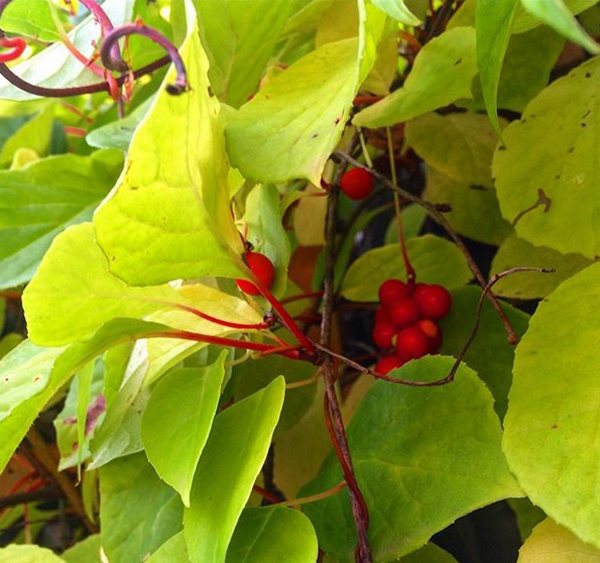

Chinese Schisandra (Schisandra chinensis)
Seat selection
Schisandra chinensis forms beautiful hedges. It is planted near gazebos, walls of houses and fences. For it to grow and develop well, it must be planted in the right place. This plant loves to twine around supports. Therefore, it must be planted either near poles, a picket fence, an arch, not very dense trees, or specially build a support for it, moreover, already in the year of planting. Lemongrass can die without it. If you determine a place for him near the house, planting from the wall should be carried out at a distance of 1 meter. It has been noticed that lemongrass prefers a living support, for example, a growing tree, and, if possible, will choose it over an iron structure. The second prerequisite for growing lemongrass is soil moisture. You should not plant a vine where stagnation of water is often observed, but it will also feel bad on a dry place. Otherwise, daily watering is required. And finally, light. Schisandra chinensis loves partial shade. Therefore, it should be placed either in the eastern or western side of the garden, where there are no strong winds. In dense shade, it does not bear fruit. In the bright sun, it gets sick and dies, flowers often suffer from recurrent frosts, female flowers crumble.
Landing dates
There are certain rules when you need to plant Chinese lemongrass. Growing and caring for it will be much easier if planting dates are met.
If you live in the northern regions of the country and have purchased a ready-made healthy seedling about 3 years old, it is best to plant it in the garden in the spring. Then the young plant will have time to get stronger before winter and cold weather. Residents of the southern regions can plant their lemongrass in the fall (no later than mid-October).
If you have purchased several seedlings, planting holes for them need to be dug at least 1 meter from one another, otherwise the overgrown plants will drown out each other. Lianas planted side by side are better suited to weather conditions than a single plant. The soil
Schisandra Chinese, cultivation and maintenance of which is not the easiest, the soil requires fertile, rich in nutrients. It is worth giving preference to medium loamy soils. It is imperative to add humus to the planting pit - a bucket, ash - 500 grams, superphosphate - 200 grams.If the soils are clayey on the site, they need to be lightened with sand. If acidic, lime must be added to them. If there are sandstones, they can be refined with organic matter. The reaction of the soils should be close to neutral. To prevent lemongrass roots from decaying, it is imperative for him to build a drainage pillow.
Planting process
In order for lemongrass to take root, cultivation and care of it must be carried out without haste. The roots of the seedling must be inspected for damage, decay. It is better to remove all doubtful areas, and dip the remaining rhizome in a mash made of clay and mullein.
A hole is dug, focusing on the size of the root system of the seedling. As a rule, it should be up to 60 cm deep and wide. A seedling is placed in it, soil is poured, compacted, watered. As a result, the root collar should be flush with the ground. The last step is to cover the space around the seedling with mulch (sawdust, cut grass, seed husks, peat). It should be noted that seedlings grown from seeds are planted in the garden only 2-3 years of their life, when they reach a length of 50 cm.
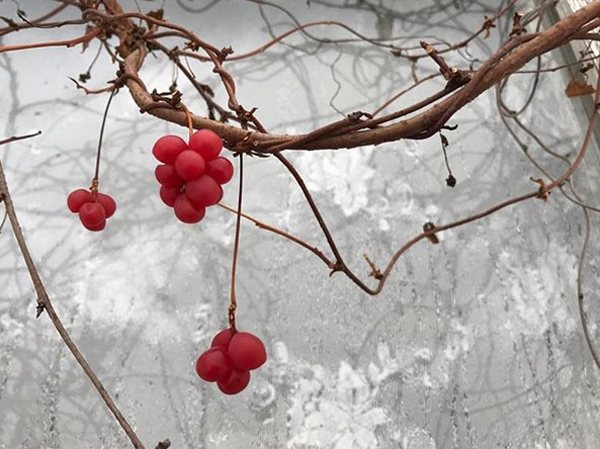

Lemongrass in winter
Care
Chinese magnolia vine cultivation and self-care requires responsible, and, throughout the growing season. The plant can tolerate frost, but does not tolerate drought. Therefore, it must be watered regularly, and on especially hot days, even spray the leaves, creating a certain humidity. This is done in the afternoon, when the sun no longer hits the leaves. An adult plant needs 60 or more liters of water at a time. After watering, the soil around the creeper needs to be loosened and covered with mulch.
►Kirkazon - how to grow a vine in the garden
Pruning is no less important for lemongrass. The first is carried out three years after planting in early spring. For this purpose, weak shoots are removed, leaving 5-6 of the strongest. But they also need to be shortened, cutting off the tops and leaving up to 12 buds. When pruning in the autumn (after the leaves fall off), all diseased and weak shoots are removed, as well as old, well-bearing fruit in a row for 2 or 3 years. Sometimes it is required to carry out emergency pruning in the summer. It is carried out in cases where the plant has too many growths that interfere with the development of the main shoot.
Fertilizer
Lemongrass Chinese loves feeding. Growing and caring for it necessarily includes the application of fertilizers. They begin to do this in April and finish in the fall. Top dressing is applied every two weeks (on fertile soils, you can apply every three weeks). Gardeners advise for the first time to introduce granules of nitrogen-containing fertilizers into the soil. Further, they are limited only to organic matter. You can fertilize lemongrass with compost, mulching the soil with it and then spilling it with water. Chicken manure or cow dung in dissolved form is also used. They are insisted for two days in the sun in water in a ratio of part of dung / manure and 4 parts of water. After mixing, add a liter jar of solution to 10 liters of water and water the plant.
What else you need to know about leaving
The cultivation of Schisandra chinensis is possible in the northern regions of the country. Here, in especially harsh winters, it is required in the fall to carefully remove the vines from the supports, lay them on the ground and cover them with spruce branches. In other regions, it winters well without being removed from the support.
Gardeners recommend covering young seedlings up to 2 years old with sawdust or foliage for the winter. Spruce branches are laid on top of them so that the plant is not damaged by animals.
Lemongrass is harvested when the berries are fully ripe. They need to be recycled quickly, as they are stored very little. You can spread the berries in the shade, after three days sort out and dry them in the oven or dryer. The temperature is initially set to +40 degrees, gradually it is brought to +60 degrees. Dried berries are spicy and sour, with a pleasant taste.
You can also squeeze fresh berries on a press. If you process them in this way, you get juice, cake and seeds.All of these parts contain beneficial substances. Diseases and pests
Liana is considered quite stable. But still, the cultivation and care of schisandra chinensis can be complicated by diseases or pests. For example, a young lemongrass can get sick if the purchased seedling was of poor quality. Therefore, when buying, you need to carefully examine the entire ground part of the plant. Schisandra chinensis can suffer from the following diseases:
Powdery mildew.
Its signs are classic - the appearance of an off-white bloom on any part of the plant. Control measures - treatment with appropriate preparations "Fundazol", "Topaz", "Colloidal sulfur" and others, according to the attached instructions. If the plant is not very badly affected, all diseased leaves and shoots must be removed. A preventive measure is the collection of all fallen leaves in the fall, followed by their burning, as well as spring spraying (on swollen, but not opened buds) with Bordeaux liquid.
Fusarium
... Unfortunately, this ailment quite often affects Chinese lemongrass. Planting young seedlings, especially those obtained by dividing the rhizome, should be carried out only after the sections have been treated with antiseptics. In the future, waterlogging of the area where lemongrass grows should not be allowed. Planting seedlings must necessarily include the construction of a drainage cushion. If the plant is affected by Fusarium, its stems become thinner, the leaves turn yellow in the middle of summer and fall off, the vine withers and dries up. There is no cure in this case. The diseased plant must be removed, and the ground after it must be treated with a strong antiseptic, for example, "Trichodermin". You also need to treat all healthy vines with an appropriate preparation.
Ramulariasis.
This ailment manifests itself as brown spots on the edges of the leaves and black dots (fungal pycnidia) on the underside of the plate. Control measures include removing the affected parts and treating the vine with a copper fungicide. No pests were found on lemongrass. Its very attractive-looking fruits of birds and insects are ignored.
Video: growing lemongrass and its beneficial properties
Varieties
Schisandra chinensis cannot be surprised by the abundance of cultivated varieties. But those that have already been created are distinguished by early maturity, productivity, resistance and frost resistance. It is worth paying attention to the following ones: Firstborn. Its fruits ripen in August. The variety forms a strong, long vine. Its leaves "sit" on petioles 20-25 mm long. Leaf plates of medium size, up to 60 mm wide and up to 100 mm long, deep green. The fruit is a compact cluster with cylindrical juicy fruits. Each weighs up to 0.6 grams. The mass of the entire brush is up to 15 grams. The taste of berries is sour with hints of lemon. The variety is frost-resistant, but it is used mainly for decorative purposes, as well as for collecting green mass. Berries from one liana can be harvested only up to 700 grams. It is desirable to carry out additional pollination of the plant. Debud. New mid-season variety with male and female flowers. Carmine fruits of a cylindrical shape weighing 11 g each, the largest - up to 18 g. The maximum yield is 6 centners per hectare. Myth. 5-meter bush-shaped liana. The fruit weighing up to 6.5 g consists of 15 fused fruitlets formed from one ovary. Flowering in the third decade of May, harvesting from the second decade of August. Frost and drought resistant. Flowers can be partially affected by frost; when planted in the open sun, male flowers prevail over female ones. Volgar. A medium-late ripening variety with a predominance of female flowers over male ones. Begins fruiting in 5-6 years. The crop is stable, formed on the shoots of the current year. From a bush, you can collect up to 600 g of berries. Sadovy-1. It is characterized by fast growth of shoots and not very high (up to 2 m) lianas. On one brush, plants of this variety can have up to 28 sweet and sour berries. Each weighs up to 0.4 grams. From one vine, they can be collected up to 6 kg.
Mountain. The variety is mid-season.Up to 1.2 kg of berries are harvested from one liana. Plants of this variety form loose clusters about 100 mm long and weighing up to 17 grams. Each can contain 30 berries. Each weighs up to 0.7 grams. They taste pleasant, sweet and sour.
Oltis. The variety is mid-season. His brushes are up to 86 mm long. Each has 17 relatively large fruits weighing up to 0.8 grams. Their pulp is juicy, pleasant to the taste, with characteristic lemon notes.
Purple. The variety is mid-season. From one liana, you can collect almost 3 kg of berries. Vines grow up to 6 m in length, their stems are thin, up to 15 mm thick, leaves are heart-shaped. Brushes of this type are about 90 mm long. There can be 18-20 berries in them. Each weight is 0.5 grams. The taste of the pulp is sour.
Back to section
| <Previous | Next> |
Care advice
The whole process of caring for young and adult vines does not take much time.
back to menu ↑
See also: Campsis: description, types, planting in the open field, reproduction and care of a beautiful liana (85+ Photos & Videos) + Reviews
Watering and loosening the soil
Only warm water is used. To ensure optimal conditions for plant growth, you will need to constantly maintain moist and loose soil under the vines. It is impossible to plow the ground directly under the stems, as this can damage the high-lying root system. Under the bushes, remove weeds only by hand, and the soil in the aisle will need to be constantly loosened.
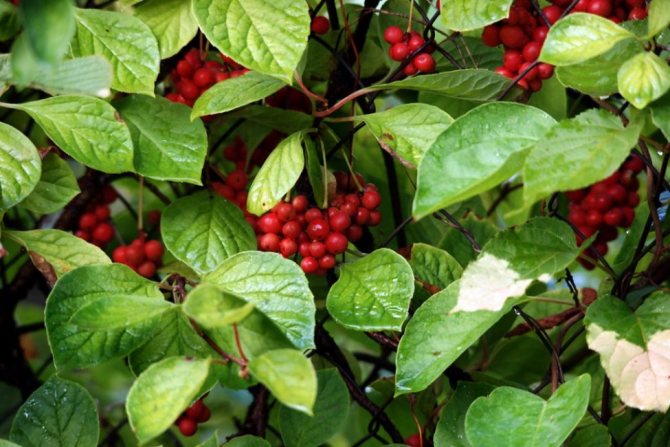

Lemongrass leaves are very fond of watering, especially in drought.
The plant is very fond of pouring water over the leaves, especially during dry periods. It is better to carry out the treatment in the early morning or late evening to avoid sunburn by leaves. It is recommended to cover the area without weeds with a layer of chopped oak bark. Such processing will allow you to retain moisture and not loosen the soil and will make the bed attractive with an additional color shade.
back to menu ↑
See also: Blackberry: a description of the 17 best varieties, cultivation features, reproduction and care (30 Photos) + Reviews
Fertilization
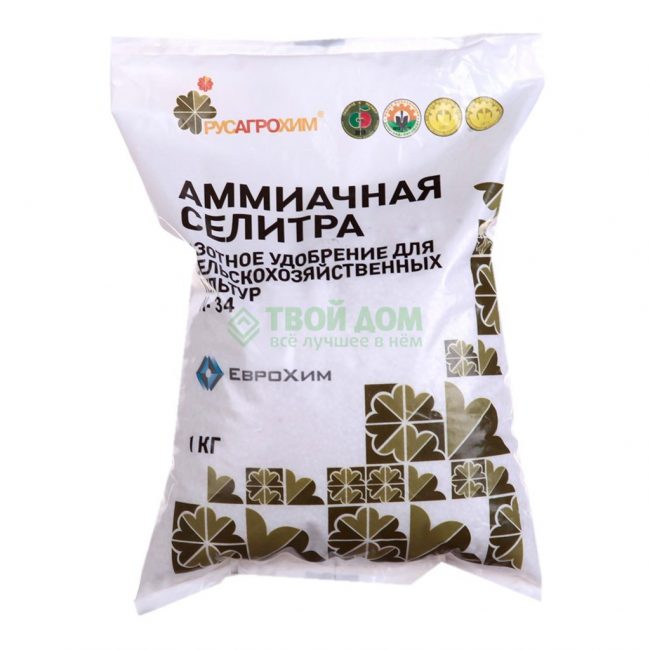

Ammonium nitrate
This work begins to be performed already in the 2nd year of growth of Schisandra chinensis. In early spring, 30-40 g of ammonium nitrate is applied along with a layer of humus mulch, which is mixed with compost.
In the summer months, during flowering and the beginning of fruiting, organic matter is introduced with a frequency of treatments at least once every 20 days. The manure is soaked in a separate container for 3-5 days. Then the finished top dressing - 0.5 l is added to a bucket of water. A bucket of the resulting mixture is poured under each bush. For the passage of nutrients to the roots, after feeding the moisture, the plant is well filled with warm water.
5th year - the beginning of fruiting, it will require phosphate fertilizers in the spring. To prepare the solution, 20 g superphosphate is used. In the fall, they are additionally fed with organic fertilizers.
Periodically, it is recommended to add wood ash to the trunk circle, at least 100 g per treatment under a bush.
back to menu ↑
See also: Snapdragon: description, types, growing from seeds, planting in open ground and plant care, medicinal properties (85+ Photos & Videos) + Reviews
Seasonal pruning of vines


Old and damaged trunks are removed several times during the season
After the 2nd year of plant development, they begin to be cut. A maximum of 4-5 shoots are left on each lemongrass. The rest of the trunks are carefully cut with a sharp pruner directly near ground level. This operation is carried out in the pre-winter period, after the foliage has fallen.
In the fall, it was not possible to cut the bush, this work will need to be done at the beginning of summer. First of all, damaged, frozen shoots are removed. 5 strong shoots are selected, the rest are cut out.
Several sanitary operations will be required during the season to remove old or damaged trunks. At the same time, the lateral shoots are shortened behind the 12th bud - this reduces the load on the bush and allows it to prepare for winter.
A 15 year old plant will have to be rejuvenated. For this, all the old vines of the bush are removed and 5 young trunks are left.
Regardless of where lemongrass is grown, in the Urals or in the southern regions, the plant is not affected by diseases and pests. You can only import the infection from Primorye or China when buying seedlings in these regions.
Curious notes about the lemongrass plant and its uses


In Chinese medicine, lemongrass has been known for at least 15 centuries. Traditional healers use this plant along with ginseng. In ancient times, its fruits were even included in the lists of taxes that had to be collected for the emperor. It is famous for its tonic properties, the ability to quickly restore the body and maintain energy, can give the eyes shine and shine. Chinese doctors prescribed the use of schisandra fruit to patients suffering from dysentery, bronchial asthma, when they were tormented by coughing fits, to overcome seasickness, as well as to relieve the symptoms of impotence and neurasthenia.
On the territory of Russia and Europe, such a miraculous plant became known only in the first half of the 19th century. Although the first to seriously study the properties of lemongrass began only in 1942, during the Great Patriotic War. The fruits of the vine helped the wounded soldiers to recover quickly.
It has already been proven that taking lemongrass berries inside, a person retains strength longer and can engage in physical labor for a long time. The composition of trace elements, vitamins and antioxidants, which are contained in the fruits, help to increase the ability to work and improve vision, removes the manifestations of drowsiness. In this case, there are no side effects. To do this, it is customary to make tinctures, powders or tablets from the fruits of lemongrass. But you can eat such berries dry or fresh. In the latter case, they are sprinkled with sugar and stored in the refrigerator.
Foliage, bark and shoots of this liana are also used; an independent drink is prepared from such raw materials or added to teas. On the basis of lemongrass berries, jelly and jams, as well as filling for sweets, have long been prepared. It is customary to bouquet wines with fruit juice.
However, there are also contraindications for using lemongrass:
- high blood pressure;
- heart problems;
- insomnia;
- pregnancy and lactation;
- chronic liver disease;
- individual fruit intolerance;
- age up to 12 years.
Features of cultivation in central Russia and Siberia
All cultivation operations remain unchanged. The dates for planting and harvesting berries are slightly postponed. This is due to the late arrival of heat in different regions. The choice of the landing site becomes more important. It should always be protected from winds on the sunny side of the building and site. During the dry period, the number of irrigations increases, but their volume remains unchanged.
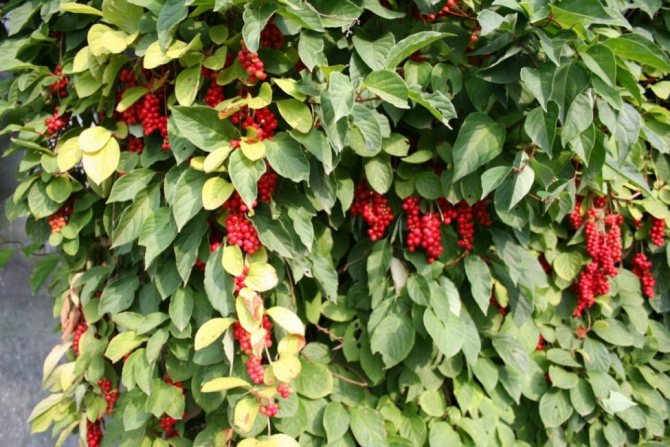

The plant is not afraid of big frosts
The plant is not afraid of severe frosts. Therefore, it will only be necessary to cover the bushes in the first 2-3 years. In the rest of the growth period, the vines can not be removed from the stretch marks. Young bushes are covered with peat or a layer of cut grass and soil.
The main danger is the period of sudden spring frosts. With a predicted drop in temperature, it will be necessary to protect the vines with a covering material. Therefore, it is not advisable to remove the protective layer from young plants early in these areas.
back to menu ↑
See also: You will be surprised to learn all the unique, healing properties of the plant Mother and Stepmother
Choosing a place for growing
For planting lemongrass well-lit areas with loose, fertile soil are ideal. In low-lying places where moisture stagnates, the vine will not grow. You can plant a plant near your home, or on a flat area near trees. It is better not to plant a liana close to the tree, its roots will lack moisture, which will be taken away by the "competitor". In turn, lemongrass will hinder the growth of its neighbor.
If the plant is planted next to a residential building, it is necessary to retreat from the wall one and a half to two meters, otherwise the roots can rot from the water flowing from the roof. In the southern regions, it is better to plant the liana on the west side of the house; in the middle lane, the east side will be the best location. In this case, the plant will have both the necessary sun rays and enough shade.
Medicinal properties and contraindications
Traditional and clinical medicine uses Chinese magnolia vine, the healing properties of which allow the use of drugs based on it in the treatment of a whole list of diseases and in cosmetology.
A lot of ointments, decoctions, infusions are made on the basis of plant parts. Essential oils and berry juice are used. The plant has a high bactericidal effect on a number of pathogens and pathogenic fungi.
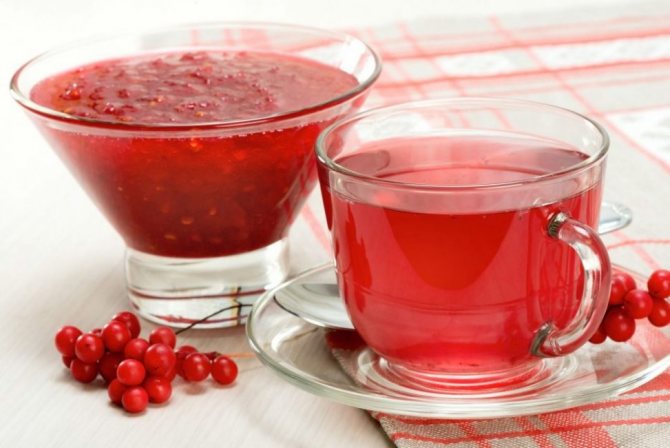

Chinese lemongrass tea
Preparations based on lemongrass treat dysentery, Koch's bacillus and intestinal, pneumococcus. The plant has a stimulating effect on the human body, increases muscle endurance due to a decrease in the level of lactic acid, even with maximum stress on the body and muscle fibers.
Let's analyze the impact and scope of application of different parts of the plant:
- ripe berries - a storehouse of organic acids necessary to improve the digestive tract, improve metabolism in the body and to improve the functioning of the digestive system. Ripe fruits contain acids: citric - up to 11.3%, malic - 8.4%, tartaric - 0.8%, ascorbic - up to 500 mg per 100 g of product
- all parts of the plant contain a high content of essential oils with a delicate lemon aroma. The oils are used in perfumery, Chinese and non-traditional medicine, and as natural fragrances for living quarters.
- foliage and berries - they have an increased content of the entire spectrum of macronutrients, from manganese to iodine and cobalt. These parts of the plant are rich in calcium, potassium, magnesium and iron.
- the plant contains an increased content of vitamins, groups "C" and "E", as well as mineral salts. All these elements improve the work of the heart muscle and normalize the water balance of the human body.
- an increased percentage of schizandrin and schizandrol is obtained from the plant - tonic substances that enhance the excitation of the cerebral cortex and increase the reflexion of the nervous system
- seed material are used in the treatment of diseases of the respiratory and gastrointestinal tract and infections of the body. Crushed seeds are taken as a powder mass
back to menu ↑
See also: Honeysuckle: a description of 19 popular varieties, their diversity and features, how to distinguish poisonous fruits (35 Photos & Videos) + Reviews
Chinese schisandra - contraindications for use
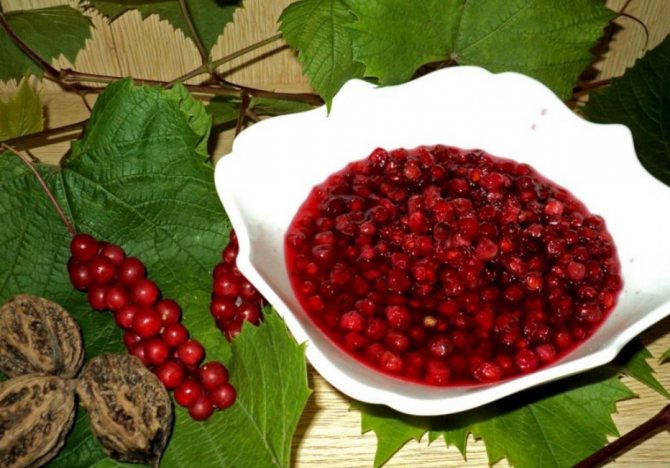

A decoction of Chinese lemongrass is taken by the course method
Medicines based on schisandra chinensis are contraindicated for pregnant women - this can cause miscarriage and premature birth. Prohibited for use in children's hospitals and for children under 12 years of age. Even juices and fruit compotes are prohibited for such children. This is due to the increased content of phytoestrogens, which cause disruption of hormonal homeostasis.
Not recommended for people with several diseases:
- hypertension
- epilepsy
- disorders of the nervous system
- disorders of the circulatory system of the body
Even in the absence of contraindications for illness, it is better to take medications based on any herbs after visiting a specialist - a homeopath or other specialized doctor.
Like all medicines, infusions and decoctions of schisandra chinensis are required to be taken by the course method with breaks between courses. The constant use of medicinal substances based on schisandra chinensis can cause:
- sleep disturbance and insomnia
- frequent migraines
- increased contractions of the heart muscle
- an allergic reaction of the body
Such contraindications are possible with individual reactions of the body and its hypersensitivity. Therefore, it is important to follow the rules and regimen of taking the drug.
back to menu ↑
See also: [VIDEO] Fast-growing vines
Method of taking medications based on lemongrass


Lemongrass seed tincture
The effect of preparations based on this medicinal plant occurs in the ear in 30 minutes and the therapeutic effect lasts for up to 4 hours. It is not recommended to take tonic infusions several hours before bedtime, otherwise you will have to “count sheep” for a long time. The drugs are taken before meals or 4-5 hours after meals.
The main data on the intake of traditional medicines are given in a separate table.
| A variety of medications | Dosage value for a single dose | Number of daily medication doses |
| Alcoholic tincture of berries, foliage and creeper stalks | 20-40 drops | 2 |
| Berry tincture with rubbing alcohol | 20-40 drops | 2 |
| Natural decoction of schisandra chinensis seeds | 1 tbsp. the spoon | 3 |
| Receiving seed powder | 1 gram | 3 |
| Squeezed juice from ripe creeper fruits | 1 tbsp. the spoon | 3 |
| Infusion of berries on water | 2 tbsp. spoons | 3 |
| Infusion of foliage on water | 1 tbsp. the spoon | 3 |
The duration of the course of taking phytopreparations is prescribed only by a doctor after determining the severity and type of disease... The instructions for taking on the original packaging with the medicinal product indicate the intake rate for an adult. For adolescents, if there is no separate column in the instructions, the dosage level is halved.
Protecting lemongrass in the garden from possible diseases and pests


You can please gardeners with the fact that the plant only in rare cases is affected by harmful insects, among which aphids are in the lead. The pests are likely to dislike the strong lemon scent produced by the foliage, flowers, and fruit. Aphids, appearing on a liana, cause wilting and yellowing of foliage, as bugs suck out nutritious juices. For control, it is rarely recommended to use insecticidal preparations, like Aktara or Fitoverm, since the entire aerial part is used for medicinal purposes. You can then use folk remedies to destroy pests: a decoction of wormwood, tincture on onion peel or tobacco.
It happens that lemongrass (especially Chinese) affects lemon gall midge, leading to the death of flower buds. The foliage and seeds are attacked by bedbugs, and the larvae of the May beetles spoil the root processes of the vine. Often, birds also contribute to the loss of crops, as they eat fruits that are painted in a bright red color and remain on the branches until the very frost.
With diseases, the situation is a little worse, since if the rules of agricultural technology are violated, lemongrass can be affected by fungi, which provoke the following problems:
- Powdery mildew,
manifested on both sides of the leaf plates, if measures are not taken, then by September the leaves are covered with black specks and the foliage begins to fly around prematurely. However, it has been noticed that this disease is more common on wild vines. - Fusarium
or, as it is also called,
"blackleg"
... Vine seedlings are damaged, manifesting itself by the formation of a dark constriction at the base of the stem, leading to the permanent death of the specimen. It is recommended to plant seedlings only in fresh soil. If the plant is sick, then it is recommended to remove it from such a focus, and water all other seedlings with a pale pink solution of potassium permanganate. - Leaf spot
It is manifested by the fact that spots of brown blurred outlines appear on the edge of the sheet plate. The reverse side of such a mark has a black speck. With this disease, all the foliage falls off, it must be immediately collected and destroyed (burned).After that, treatment with Bordeaux liquid in 1% concentration is recommended. Since all parts of lemongrass above the soil are used for treatment or other needs, treatment with pesticides is not encouraged. The affected parts of the vine are removed and burned, and decoctions from herbs (garlic, calendula, etc.) are used against diseases.
Common varieties
Far Eastern rhododendron daurian
The following types of lemongrass are most common:
- Chinese and Far Eastern - are of great importance as a medicinal or tonic.
- Crimean differs in that it is small in size, grows on sunny slopes, meadows and pastures. The elongated leaves have a strong lemon scent.
- Japanese quince is a small shrub with small yellow berries.
- Lemon grass grows up to a meter in height. It emits a pronounced citrus aroma. It is added to teas, condiments or soups.
Far Eastern is the variety that has the greatest medicinal and health-improving value.
Watering features
In hot weather, lemongrass, the care and cultivation of which does not require the use of special knowledge, is recommended to be sprayed with warm water, especially for young specimens. For mature trees, moisture supply is required in dry weather, using 6 buckets of water per plant. It is also necessary to water after each feeding, thus ensuring optimal access of mineral and organic preparations to the plant roots. With the onset of fruiting, all fertilizing must be stopped. In autumn, it is recommended to mulch the soil around the plant with fallen leaves or compost.
Harvesting Far Eastern lemongrass for the winter
In order to preserve the medicinal properties of berries from the lemongrass vine, it is recommended to dry them for the winter. In this way, raw materials are harvested as follows:
- Whole bunches, not divided into individual berries, are laid out on a baking sheet, on which a layer of cloth or paper was previously laid. At the same time, it is important to distribute the fruits so that they do not touch each other.
- A baking sheet with raw materials is carried away on the face under a canopy or into the attic. In the second case, you need to make sure that the attic is sufficiently ventilated.
- When lemongrass is slightly dry, you can separate the bunches by removing individual berries from the stalk.
- The stalks are thrown away, after which the remaining fruits are laid out in a thin layer.
- After that, the baking sheet is placed in the oven for 5-7 hours at a temperature of about 40-50 ° C.
- The procedure is repeated for several days.
Important! Far Eastern lemongrass, dried according to all the rules, acquires a dark red color.


Lemongrass varieties
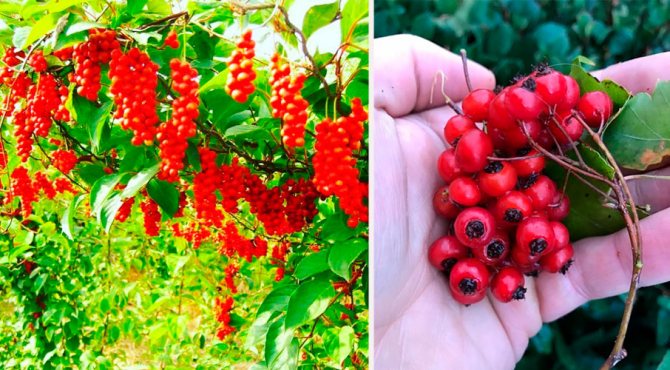

There are few varieties, but the selection work carried out with this exotic crop makes it possible to select seedlings for areas with different climatic conditions.
Let's give a brief overview of the most common varieties in nurseries:
- Volgar - a monoecious plant, with an average ripening period. Drought-resistant and frost-resistant specimen. It tolerates temperature changes. Not susceptible to pests and infections. Bushy crown up to 5 meters in height. Flowers are medium in size with a white corolla. Male flowers may predominate depending on the season. The fruits are not large, up to 15 pieces in one cluster. The taste is sour with a resinous aroma.
- "Purple" - one of the first mid-season varieties. Frost-resistant, but with little resistance to infections and pests. Bushes are compact, curly, with thin shoots. Fruiting 3-4 years after planting. The bunches are neat with small elongated carmine-scarlet fruits. The pulp is sour.
- Chinese Schisandra - perennial vine up to 15 meters in height, with large leaves and bright red ovoid fruits. More suitable for ornamental cultivation, berries have a bitter-sour taste. Blooms all summer, fruits ripen by September.Frost-resistant and unpretentious variety.
- "Delight" - woody perennial liana, the height of which reaches 13-15 meters. It blooms in May and June with snow-white flowers, spreading a pleasant citrus aroma. In the midst of autumn, delicious bright red bunches of fruits appear. Fruiting for 4-5 years. Productivity 4-5 kg per bush. Prefers sandy soils with the addition of humus. Frost resistance up to - 25 C.
- "Myth" - a monoecious hybrid with a late maturity. The crown is bushy, not thickened, up to 5 meters in height. The flowers are medium in size, with a white corolla. Neat brushes up to 6.5 cm in length. Each seed has 15-20 berries. The berries are dark red, juicy with a sour aftertaste, suitable for fresh consumption. Productivity up to 0.6 kg per bush. Frost- and drought-resistant variety, not susceptible to infection by pests.
Expert opinion
Yulia Safronenko
A big fan of experimentation and personal gardening techniques
Ask a Question
"Debut", "Sadovy 1", "Firstborn", "Oltis", "Gorny" - each of the listed varieties begins to bloom in spring and pleases with autumn harvests of numerous bright red fruits, which are collected in neat spreading bunches.
Tree pruning
Two-year and three-year-old lemongrass are pruned. Such a tree does not actively form roots, it expends energy on fruits. After pruning, lemongrass will begin to form shoots, you will need to leave 4, and remove the rest.
I recommend adjusting the plant in the fall when it sheds its leaves. It is forbidden to carry out the procedure in the spring before sap flow, the plant may die!
Lemongrass is positive about sanitary pruning. Remember to remove too small, dry and damaged branches. If the shoots are too long, shorten them by 12 cm. Caring for lemongrass involves regularly removing the root shoots.
I recommend doing a rejuvenating haircut, that is, thinning the branches. The procedure is very necessary for a plant that is 15 years old. It is undesirable to transplant lemongrass, a tree, regardless of age, does not tolerate a pick.
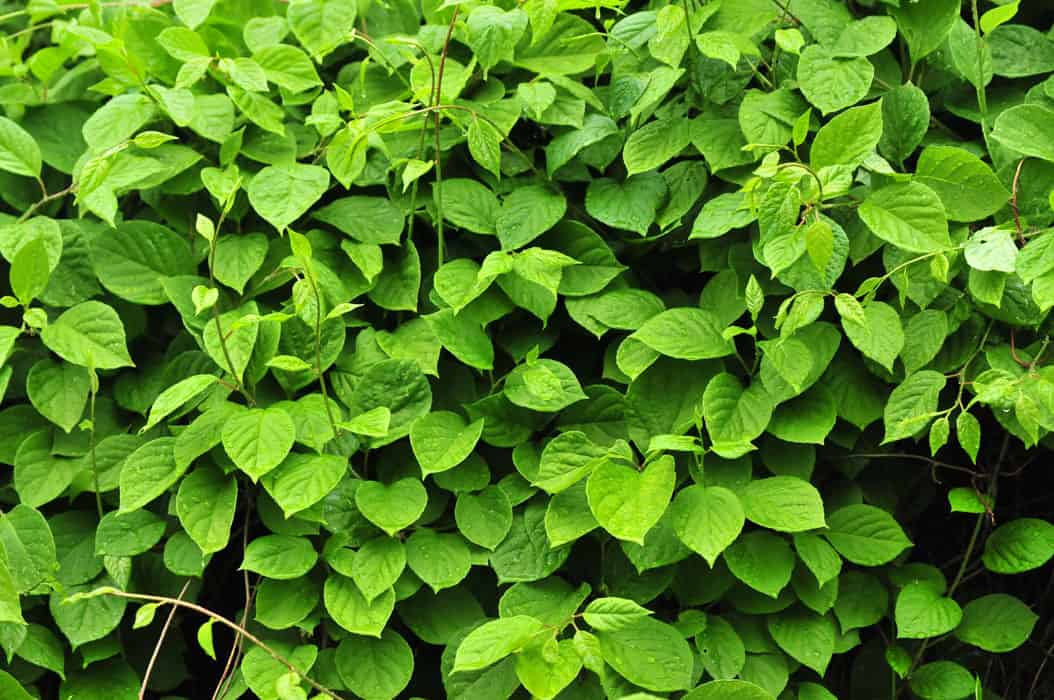

Gardening Tips


- Lemongrass grown from seeds, as a rule, grows monoecious with high yields.
- When breeding a perennial by cuttings or dividing the rhizomes, new seedlings retain their sex and all their original parental properties.
- Young plants must be shaded immediately after planting, so you will save delicate foliage from sunburn.
- Every gardener knows that the health of not only the root system, but also the rapid growth, flowering and fruiting of the plant as a whole, depends on the drainage system.
- Liana is a moisture-loving plant that needs frequent and abundant watering, and is thermophilic, so the water should not be cold.
- Lemongrass is a Chinese real natural healer. Its fruits contain a huge amount of nutrients, organic acids and essential oils. Dried young stems and cuttings of leaves serve as an excellent addition to tea, giving the drink a wonderful aroma.
When to harvest
Lemongrass begins to bloom and bear fruit productively only in the fifth year, but not earlier than three years, after transplanting to the place of cultivation.
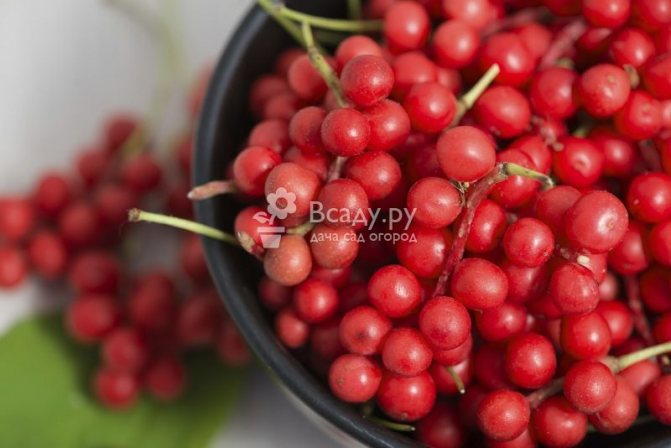

Harvesting lemongrass
Fruits ripen in brushes with soft translucent red berries. It is advisable to harvest the fruits together with the branches - the stalks. They are used with green mint or dried leaves to brew natural, aromatic tea.
Benefit
The Chinese discovered the beneficial properties of lemongrass 15 centuries ago. In Russia, the plant began to be used in the 19th century. Modern people owe the discovery of lemongrass to Vladimir Komarov, a researcher of the Far East, who discovered that berries and leaves, as well as the roots of the tree, are used everywhere. Now lemongrass is used in pharmacology and is part of many drugs, including those used in military affairs.
Schisandra contains essential oils, citric, tartaric and ascorbic acids, sugar, many macro- and microelements, vitamins (in particular, E and P). The main feature of the fruit is its tonic effect. In this regard, doctors recommend eating berries to restore strength. Lemongrass is also used to treat many diseases, including asthma, neurasthenia, it also helps well to reduce the effect of seasickness. For diabetics, the consumption of berries will lower sugar levels, and sailors will serve as an excellent tool in the fight against scurvy. During World War II, lemongrass was used as a wound-healing agent.
Typical diseases, pests and control
Schisandra chinensis by nature has good immunity. Due to the high content of tannins in the fabrics, almost all pests bypass it. Birds don't like fruits either. Breeders have learned to protect plants from mold and rot. All modern varieties are extremely rarely affected by these diseases. However, the list of fungi dangerous for culture is not limited to them. Schisandra chinensis can suffer from the following diseases:
- fusarium. Most often, young plants are infected with the fungus. They stop developing, the shoots darken and become thinner, the leaves turn yellow and fall off. The roots turn black, become slimy to the touch. For prophylaxis, the seeds are kept in a Trichodermin solution for 15–20 minutes before planting, and the soil in the garden is spilled with it. The diseased plant must be immediately removed from the garden and burned, eliminating the source of the infection. The soil in this place is disinfected by pouring a bright pink solution of potassium permanganate;
- powdery mildew. Leaves, buds and stems are covered with spots of a whitish bloom, similar to scattered flour. Gradually it thickens and turns brown. The affected parts of the plant dry out and die off. For prophylaxis, the liana and the soil in the garden bed are powdered with crushed chalk, sifted wood ash, and colloidal sulfur every 10-15 days. To combat the disease at an early stage, use a solution of soda ash (10-15 g per 10 liters of water), in severe cases - fungicides (HOM, Topaz, Skor, Kuprozan);
- leaf spot (ascochitis, ramulariasis). Irregular brownish-beige spots with a black-brown border appear on the leaves. Gradually, the fabrics in these places are covered with small black dots from the inside, dry out, and holes are formed. For prophylaxis, seeds are soaked for 2-3 hours in a bright pink solution of potassium permanganate, Alirin-B. Having found alarming symptoms, even minimally affected leaves are cut and burned, the plant is sprayed 2-3 times with an interval of 7-12 days with a 1% solution of Bordeaux liquid or copper sulfate. Also used fungicides of biological origin.
Photo gallery: symptoms of schisandra chinensis diseases
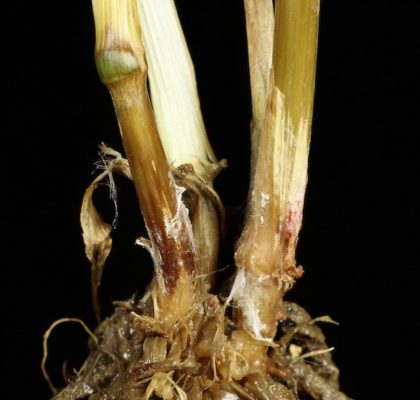

A plant affected by fusarium seems to wither and die for no apparent reason.


Powdery mildew seems to be a harmless bloom that can be easily wiped off the plant, but this is by no means the case.
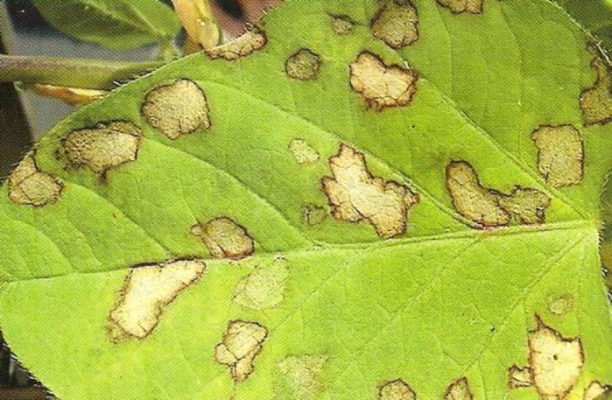

The development of ascochitis is facilitated by damp and cool summer weather, as well as an excess of nitrogen in the soil.
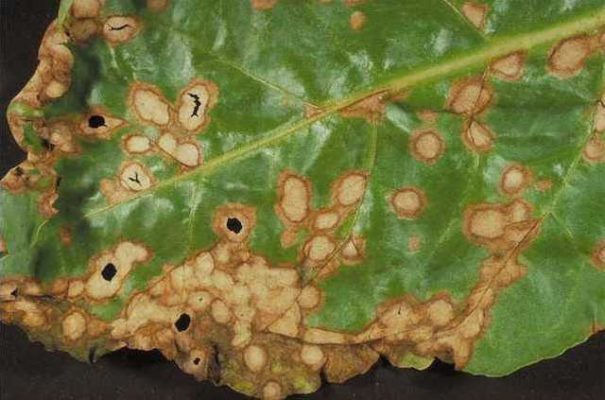

Biological fungicides are used to combat ramulariasis
It is only necessary to use any chemicals to fight diseases as a last resort, because they have the property of accumulating in the tissues of the plant. The best prevention is competent care, and this is what needs to be focused on. The contaminated parts are burned as quickly as possible, rather than being stored somewhere in the far corner of the site.
Chinese lemongrass is a plant that not only decorates the garden, but is also very useful. There is nothing difficult in regularly getting a harvest of berries rich in vitamins, microelements and organic acids. The plant does not make any unusual requirements for agricultural technology, it successfully adapts and bears fruit in a variety of climatic and weather conditions.
Raw material collection rules
Far Eastern lemongrass berries are harvested only when they are ripe - this is evidenced by their rich red color. If you collect the raw materials earlier, there will be no benefit from it.
Lemongrass ripens in late September - early October. It is important to harvest before the first cold weather.
Advice! The berries are easy to damage during picking. To prevent this from happening, the fruits are harvested in whole bunches, along with the stalks.
The harvested crop is spread in an even layer on the fabric in a dark, dry place. A canopy or attic is perfect for this. After 3-5 days, the berries will dry out, after which they can be dried in the oven at a temperature of 50-60 ° C. At higher temperatures, raw materials can be burned.
Store the crop in a closed container, in a dark and dry place. The beneficial properties of lemongrass persist for up to 2 years.
Important! In no case should you collect lemongrass in galvanized buckets, and, in general, in metal unenamelled dishes. When the metal interacts with the juice of berries, an oxidation reaction occurs, which deprives them of their useful properties.
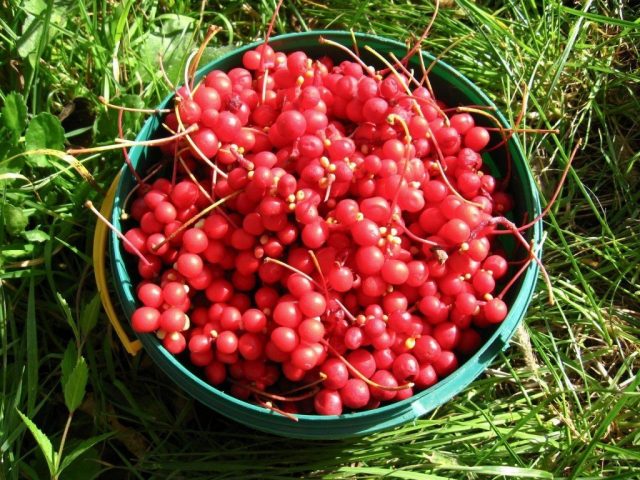

When and how it blooms
Flowering occurs in the first half of July.
Types of flowers
During growth, the buds are pale white in color. Shortly before they begin to fall off, they acquire a beautiful light cream color.
Flower shapes
Lemongrass flowers are similar in shape and appearance to magnolia flowers created from wax. The buds are collected in inflorescences. Each includes 3-5 flowers.
Flowering period
At this time, the flowers located in the axils of the leaves attract insects for pollination with a strong aroma.


Frame
They are on long pedicels and bend slightly to the ground.
Monoecious or dioecious
Schisandra can be monoecious (staminate and pistillate flowers on one plant). And sometimes it is dioecious, bearing only staminate or only pistillate flowers. Studies have shown that most often there are male plants (35–40%), which annually form only staminate flowers. Nevertheless, plants with an unstable ratio of staminate and pistillate flowers prevail over the years. In some years, only staminate flowers are formed in them, and in others, both staminate and pistillate flowers.
In lianas with an unstable type of fruiting, the appearance of certain flowers and, consequently, yield depend on external conditions, primarily on temperature, nutrition and soil moisture. In the garden, it is better to plant monoecious lianas, which yield a crop annually and do not require planting a pollinator.
Why lemongrass does not bear fruit
The plant, as we have already noted, is rather capricious. There are several reasons why lemongrass does not bear fruit:
- Too dense shadow interferes with the development of vines;
- A large number of shoots does not allow the plant to gain height. As a result, it remains stunted and produces few fruits. This is why you need to prune your shrub regularly;
- Very often the problem is lack of pollination. Lemongrass are pollinated by pollen-eating bugs. Sometimes they are unable to cope with the task, especially when the cold season comes or it often rains.
Contraindications for use
The benefits of lemongrass are undeniable, however, in some cases, excessive consumption of berries can be harmful. That is why it is advisable to consult a doctor before starting to take the fruit.
Schisandra is contraindicated:
- pregnant women (can provoke a miscarriage);
- when breastfeeding;
- persons with individual berry intolerance, as evidenced by pronounced allergic reactions;
- people with skull or spine injuries;
- with epilepsy and mental disorders;
- with gastritis, gastric ulcer and duodenal ulcer;
- with high blood pressure (but with hypotension, the berries will benefit the body).
Important! Eating a lot of berries can cause serious harm to human health.An excess of this product in the diet provokes physical exhaustion, problems with the cardiovascular system and insomnia.
In addition, it is not recommended to give Far Eastern lemongrass to children under 10 years of age.

